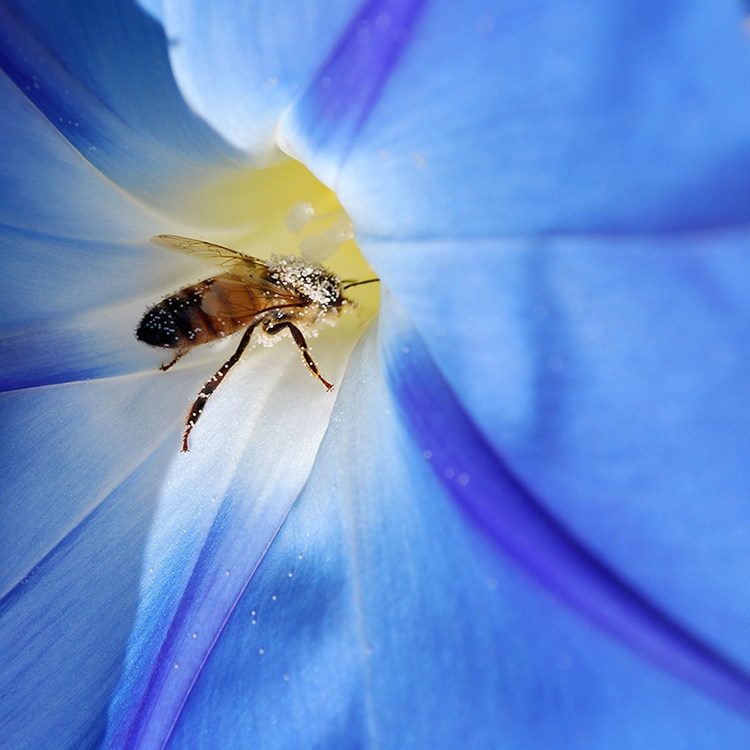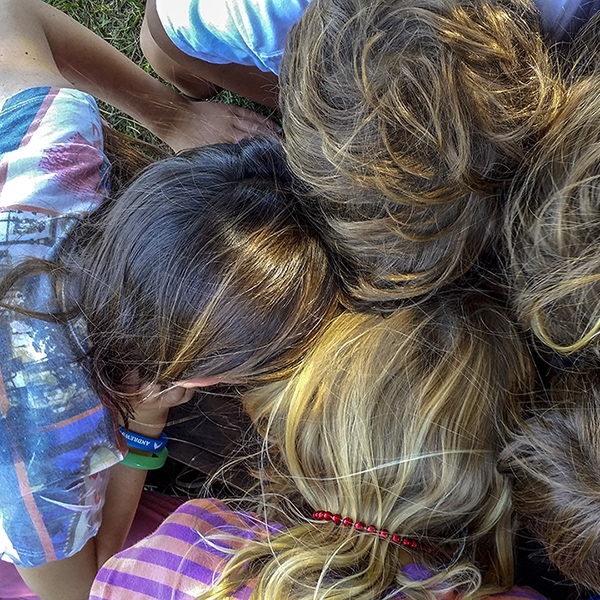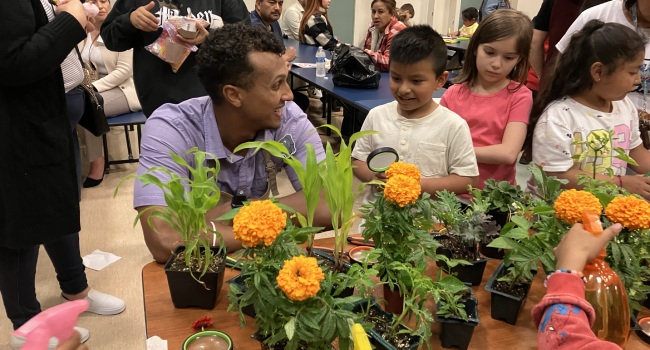Bee a Scientist in Your GrowingGreat Garden!
This is a guest post by our friends at Planet Bee Foundation.
Fruits and many types of vegetables start as flowers. To make the transformation from bloom to table, these flowers have to be pollinated.
In the United States, bees pollinate 1/3 of every bite we take, but this year, we lost 40% of beehives across the country. It’s more important than ever to understand bees and take action to help them because bees rely on us to stay healthy.
Studying bees is a great way to get outside, get engaged with environmental issues, and have fun!
The Planet Bee Foundation Lesson: “Bee a Scientist!”
Bees love lots of different flowers, but which ones are their favorites? Using the scientific method helps us find out which flowers bees prefer.
You Will Need:
A pen or pencil and paper to write on; a GrowingGreat garden or nearby area with flowers
The Activity:
- Pick a warm day. First, make a chart of colors or shapes to study in the garden.
Here are some suggestions: blue, red, yellow, or purple flowers; tube-shaped or flat flowers; small or big flowers.
- Predict which flowers the bees will like the best. What shape or color do you think will be most popular? Do you think the bees will like red flowers better than other flowers? Why? Create your hypothesis! (A hypothesis is the idea you’re going to test.)
- Bring your color/shape chart to the garden. Count as you go. Every time you see a bee on a flower, record it in the right section with a tally mark.
- When you are done with your observation, count your tallies and record the total number of bees that visited each of your flower categories. If you want to, you can make a bar graph with the information! See which flowers bees liked the most. Was your hypothesis right? Why do you think bees liked those flowers?
Conclusion and Analysis:
Bees see in ultraviolet – blue, yellow and purple are bright, but red appears dark gray or black to them. Did your “color” results reflect this fact?
Bees are generalist pollinators. They’ve evolved to pollinate all kinds of flowers, not any one flower in particular. Did your “shape” results reflect that?
Post-Lesson Stewardship:
If you enjoyed this activity, join the Citizen Science effort to help bees! Taking the time to look at a sunflower for 15 minutes a day can make a big difference to scientists. Research organizations like The Great Sunflower Project will use your data to help bees around the world!
Planet Bee Foundation is on a mission to create the next generation of environmental stewards through education and awareness of struggling bees, which are disappearing worldwide due to Colony Collapse Disorder and other environmental factors. Planet Bee’s hands-on, inquiry-based curriculum centers around honeybee biology, ecology, and conservation. Together, let’s change the world, one bee at a time! Learn more at planetbee.org.





Add Comment